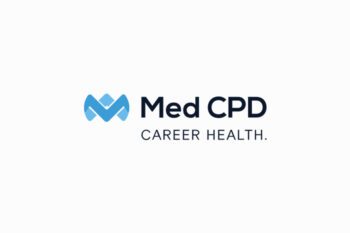Alcohol a risk factor for cancer in women
July 4, 2023
A risk factor worth educating on
Through new and developing research, it seems the list of carcinogenic factors in our daily lives is only on the rise. Not quite yet a household name; research shows that alcohol may be one of the biggest contributing factors to breast cancer development in women, worldwide. It’s alarming to note that the World Health Organisation (WHO) identifies alcohol as a contributing factor to approximately 4.4% of global breast cancer diagnoses and nearly 10% of related fatalities. In Australia, the picture is no less concerning, with alcohol attributing to 6.6% of breast cancer cases in post-menopausal women and a staggering 18% of breast cancer-related deaths. These figures are even more disconcerting given the inadequate awareness of these risks, particularly as the bar for ‘safe’ alcohol consumption levels, associated with increased risk, has been significantly lowered. Evidence from numerous research studies indicates a consistent link between the consumption of alcoholic beverages — beer, wine, and liquor — and an increased risk of hormone-receptor-positive breast cancer in women.
Hormone-receptor-positive breast cancers
Breast cancer can be characterised as a cluster of malignant cells that develop from breast tissue. The categorisation of a tumour as hormone-receptor-positive is applicable when it is composed of cells that bear receptors for specific hormones. These tumours are typically oestrogen receptor positive, though they may also be progesterone receptor positive.
Breast cancers that are oestrogen-receptor-positive (ER+) possess receptors for the hormone oestrogen. The attachment of oestrogen from the body to these receptors has the potential to fuel the cancer’s growth. ER+ breast cancer is the predominant type, constituting about 70% of all breast cancer cases.
On the other hand, breast cancers that are progesterone-receptor-positive (PR+) carry receptors for the hormone progesterone. Similar to ER+ cancers, PR+ cancers can also proliferate when progesterone is present. PR+ cancers are often ER+ as well, and these types of cancers typically show a favourable response to hormonal therapy.
How alcohol contributes to breast cancer pathogenesis
Research conducted using cell cultures, animal models, and human studies have identified several potential mechanisms through which alcohol may contribute to the development of breast cancer. These mechanisms primarily involve the carcinogenic properties of ethanol metabolites and the impact of alcohol on oestrogen levels. Acetaldehyde (AA), the primary metabolite of ethanol, is suspected to play a significant role in the development of breast cancer. The process of metabolising 80% of ethanol to AA is primarily mediated by alcohol dehydrogenase (ADH), an enzyme that is most abundant in the liver, where it constitutes approximately 97% of all ADH. However, ADH is also present and functional in breast and other tissues. AA has the ability to bind to proteins and DNA, disrupting the antioxidative defence system and impeding DNA synthesis and repair. Furthermore, it can induce epigenetic changes by decreasing the availability of methyl donors, leading to alterations in histones and DNA methylation, thereby causing genomic instability. An elevated alcohol intake has been associated with increased levels of circulating oestrogen, believed to trigger cell proliferation mediated by hormone receptors and cause genetic changes such as aneuploidy. Ethanol has also been proposed to contribute directly to the development of breast cancer by suppressing the tumour suppressor gene BRCA1, which leads to heightened transcriptional activity of ERα, a principal oestrogen receptor, resulting in amplified cell proliferation and a higher likelihood of genetic damage.
Despite these compelling biological theories, the data linking alcohol and breast cancer risk are derived from non-randomized studies. Given the relatively modest association – approximately a 30-50% increase in breast cancer risk from moderate alcohol consumption – it’s essential to exclude any bias that could explain these results. Notably, since alcohol’s association with breast cancer risk is observed in both case-control and cohort studies, which are subject to different biases, it is less probable that selection bias or information bias could account for this connection. Nevertheless, confounding factors, such as poorly measured or unmeasured precursors of alcohol consumption and breast cancer, could potentially explain the observed results. For instance, if moderate alcohol drinkers were more prone to a higher caloric intake or less likely to exercise, these lifestyle factors could account for the observed increase in breast cancer risk, either partially or entirely. Though confounding cannot be entirely eliminated through observational epidemiologic studies, insights from molecular epidemiologic research and studies on intermediate markers can assist in dismissing confounding as a likely explanation of the observed findings. The rationale is that potential confounders are less likely to also align with different intermediate and genetic markers associated with this pathway. Given our understanding that alcohol may increase breast cancer risk through mechanisms involving acetaldehyde and endogenous hormone level changes, the latest epidemiologic evidence shows correlation between 1) gene-environment interactions with alcohol metabolising genes and breast cancer, and 2) the link between alcohol and mammographic breast density, the most powerful intermediate marker for breast cancer.
Breast density and alcohol
Research in epidemiology has employed a variety of measures to evaluate mammographic density. Earlier studies typically utilised qualitative methods like Wolfe parenchymal patterns, while more recent research has adopted quantitative methods. These include categorization systems such as the Breast Imaging Reporting and Data System (BI-RADS), or continuous measures that range from 0 to 100% based on computerised threshold programs. The Tabar/RANZCR classification, used in BreastScreen Australia and BreastScreen Aotearoa, and traditionally in diagnostic radiology as well in Australia and New Zealandl. This grades abnormalities based on a simple 1-5 scale, with 1 being normal and 5 a malignant appearance (used for mammography and ultrasound).
The classification of breast density according to Wolfe patterns involves four categories: mainly fatty tissue (N1), ductal prominence in less than 25% of the breast (P1), ductal prominence in over 25% of the breast (P2), and extensive dysplasia (DY). At least four investigations have applied Wolfe patterns to measure breast density. A substantial European study involving 1,668 subjects reported a 31% rise in higher density associated with increased alcohol consumption (Wolfe pattern P2/DY compared to N1/P1). However, other studies using Wolfe patterns have generally not identified significant associations. This discrepancy might be due to the fact that Wolfe patterns usually depict larger alterations in density compared to more quantifiable measures.
New research suggests the best intervention is education
A study recently published by the MJA (The Medical Journal of Australia) has been of hot topic amongst a broad range of health professionals as it points fingers to regular primary care providers to improve education around the issue. The study aimed to examine the efficacy of a concise alcohol intervention designed to enhance awareness of alcohol as a risk factor for breast cancer, improve alcohol literacy, and reduce alcohol consumption in women undergoing routine breast screening. This single-site, double-blinded randomised controlled trial was conducted at Maroondah BreastScreen (Eastern Health, Melbourne), which is part of the national breast cancer screening program.
The participants were women aged 40 and above, with or without a history of breast cancer, who reported alcohol consumption and attended the clinic for regular mammograms from February 5 to August 27, 2021. The intervention group received an animation consisting of a brief alcohol intervention (four minutes) and a lifestyle health promotion (three minutes). The control group received only the lifestyle health promotion.
The primary outcome was the shift in the percentage of women who recognized alcohol use as a distinct risk factor for breast cancer. Out of 557 participants with an average age of 60.3 years, 82% had recently consumed alcohol. The awareness that alcohol use increased the risk of breast cancer was higher at four weeks compared to baseline for both the intervention group (from 20% to 65%) and the control group (from 20% to 38%). However, the increase over time was significantly greater in the intervention group. Alcohol literacy also showed a greater increase in the intervention group, but there was no significant change in alcohol consumption in either group.
The study concluded that a brief, personalised alcohol intervention for women attending breast screenings effectively improved awareness of the increased risk of breast cancer related to alcohol use and improved overall alcohol literacy. Given the increasing prevalence of risky drinking among middle-aged and older women and the evidence that even minimal alcohol consumption raises breast cancer risk, such interventions are especially critical. You can access this article via the following link: https://www.mja.com.au/journal/2023/218/11/brief-intervention-improving-alcohol-literacy-and-reducing-harmful-alcohol-use?utm_source=tiles&utm_medium=web&utm_campaign=homepage
Grigg, J. et al. (2023) A brief intervention for improving alcohol literacy and reducing harmful alcohol use by women attending a breast screening service: A randomised controlled trial, The Medical Journal of Australia. Available at: https://www.mja.com.au/journal/2023/218/11/brief-intervention-improving-alcohol-literacy-and-reducing-harmful-alcohol-use?utm_source=tiles&utm_medium=web&utm_campaign=homepage.
World Health Organisation (2023) Alcohol is one of the biggest risk factors for breast cancer, World Health Organization. Available at: https://www.who.int/europe/news/item/20-10-2021-alcohol-is-one-of-the-biggest-risk-factors-for-breast-cancer#:~:text=Besides%20female%20breast%20cancer%2C%20it,safe%20level%20of%20alcohol%20consumption.
McDonald, J.A., Goyal, A. and Terry, M.B. (2013) Alcohol intake and breast cancer risk: Weighing the overall evidence, Current breast cancer reports. Available at: https://www.ncbi.nlm.nih.gov/pmc/articles/PMC3832299/.












